Kleiner’s Korner: What Became of the Vanderbilt Cup Race Grandstand?
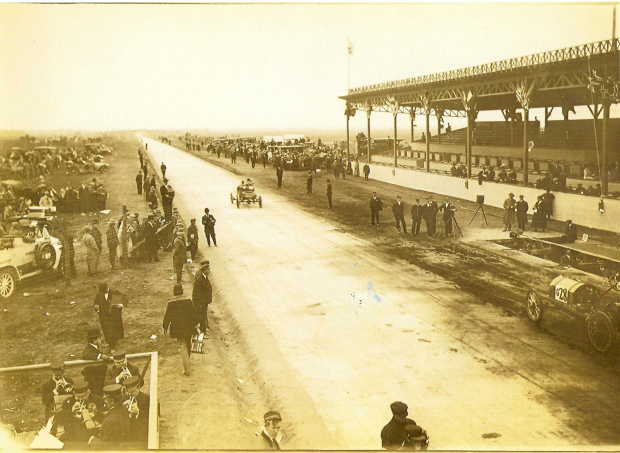
What do you do with a grandstand and associated buildings after they are no longer in use? Make some money from them, as Willie K. did. Documents are from the Vanderbilt Museum in Centerport, LI.
Art Kleiner
Willie's Instructions
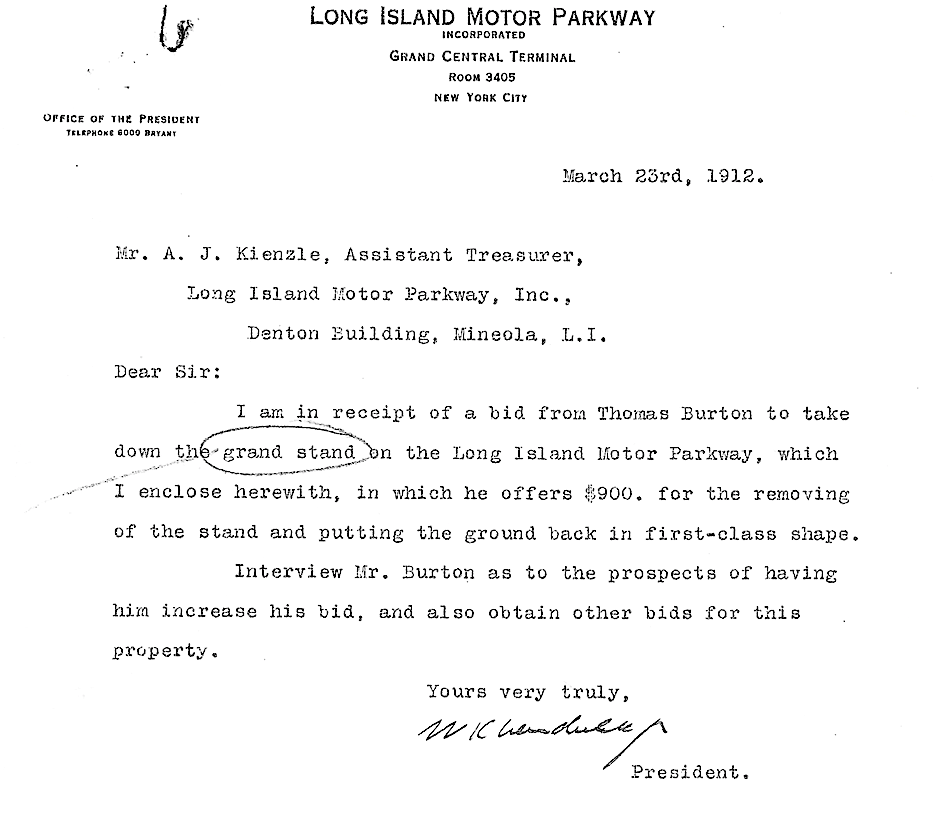
Two years after the last Vanderbilt Cup Race on Long Island, Willie K. in 1912 requested proposals to demolish the grandstand which was in today's Levittown. Willie was not happy with the first proposal and requested Asst. Treasurer Kienzle to obtain others.
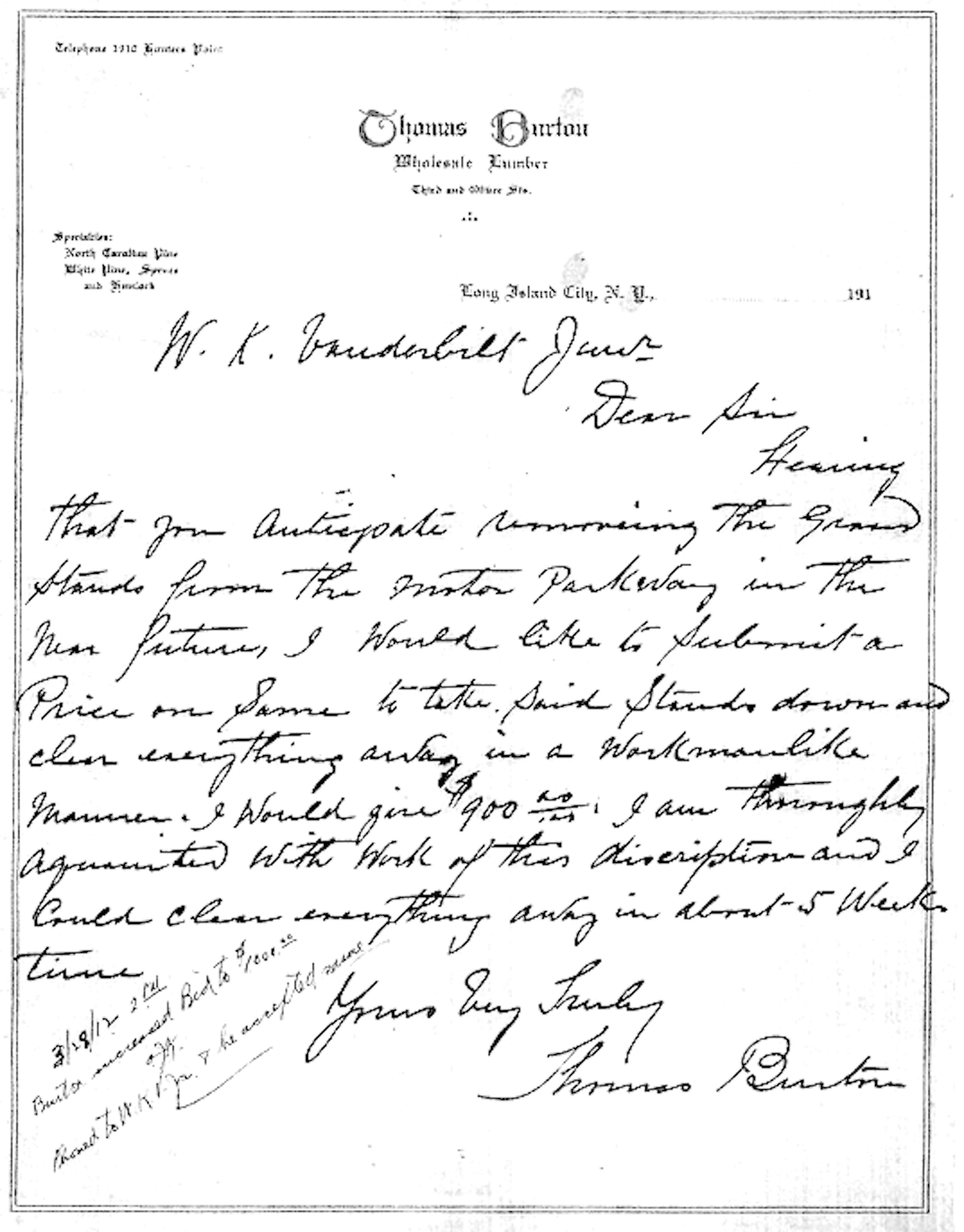
The first proposal from Thomas Burton included an offer of $900.
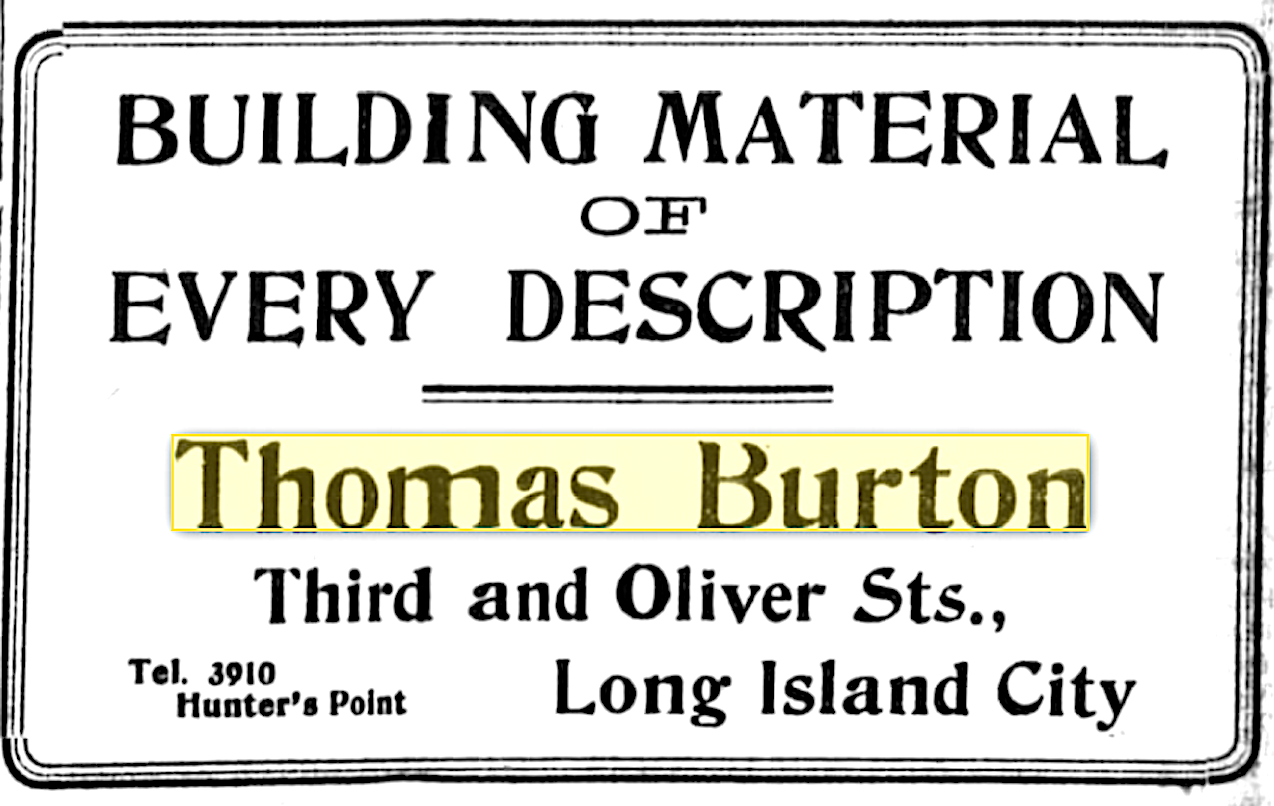
Burton, as most likely other bidders would do, would take down the grandstands and other structures and re-sell the lumber. With today's lumber prices sky rocketing, he would do very well today!
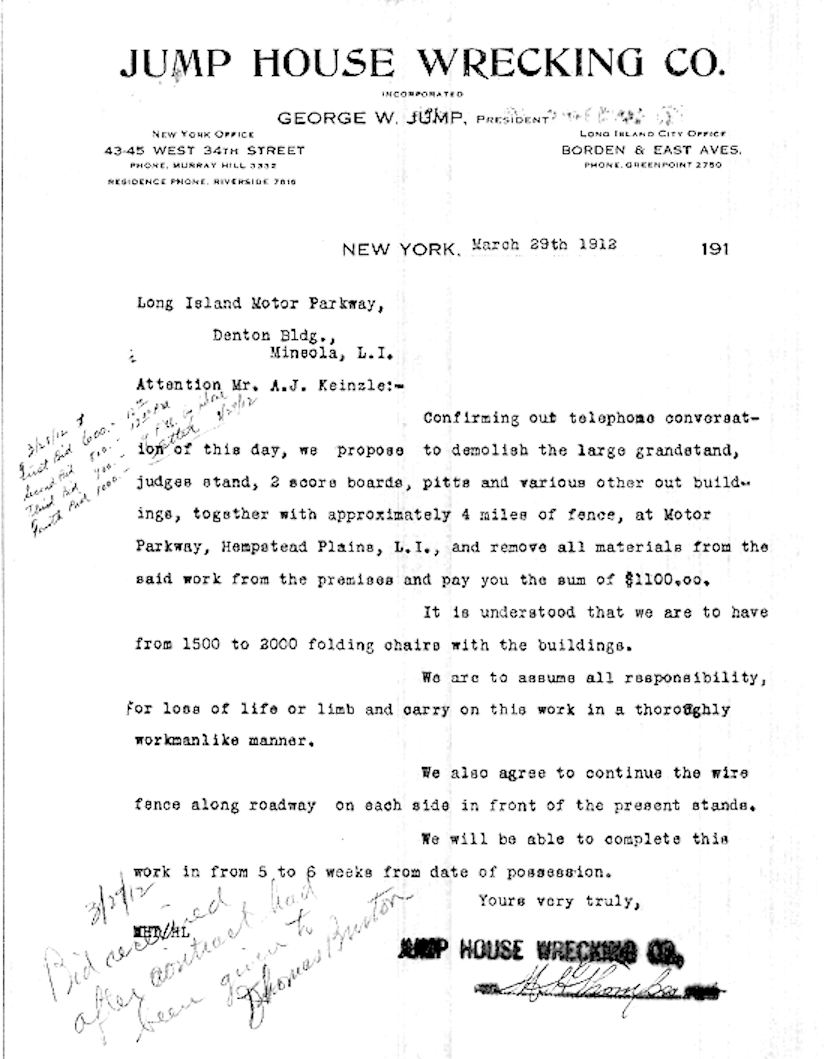
Another offer was from the Jump House Wrecking Company for $1,100 and included removal of the grandstand, judges stands, score board, pits, other buildings, 4 miles of fencing and between 1500 and 2000 folding chairs. But wire fencing was to be maintained near the grandstand location. Unfortunately this higher bid was received after the contract had already been awarded to Burton.

Owned by Geo. W. Jump the firm offered second-hand building material. Wonder if the grandstand material ended up in any structures still standing somewhere on Long Island!
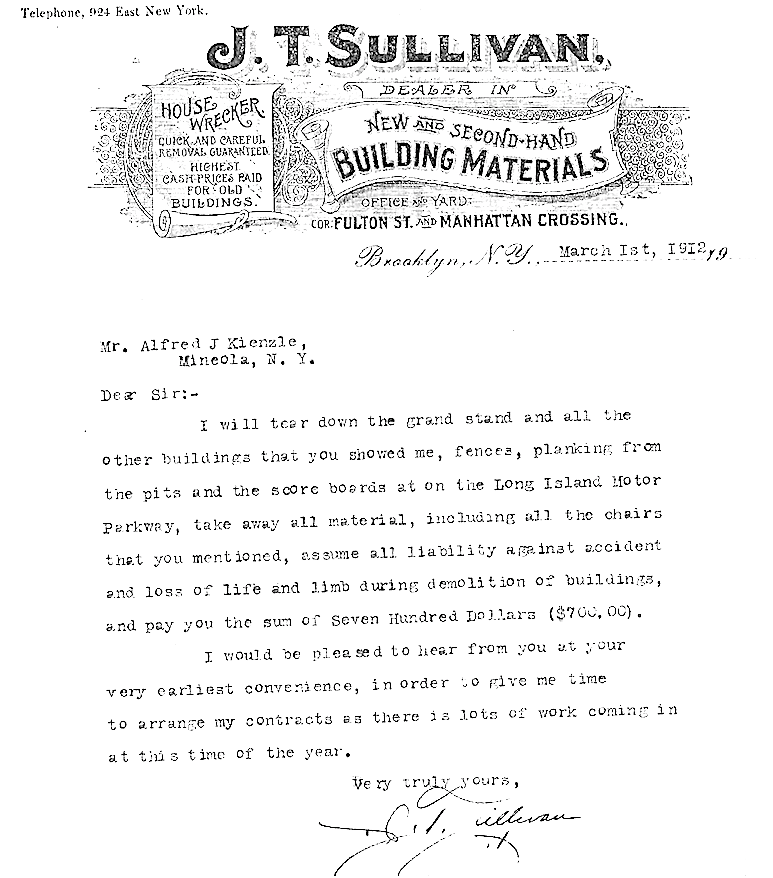
An offer from the J.T. Sullivan Company was for $700.
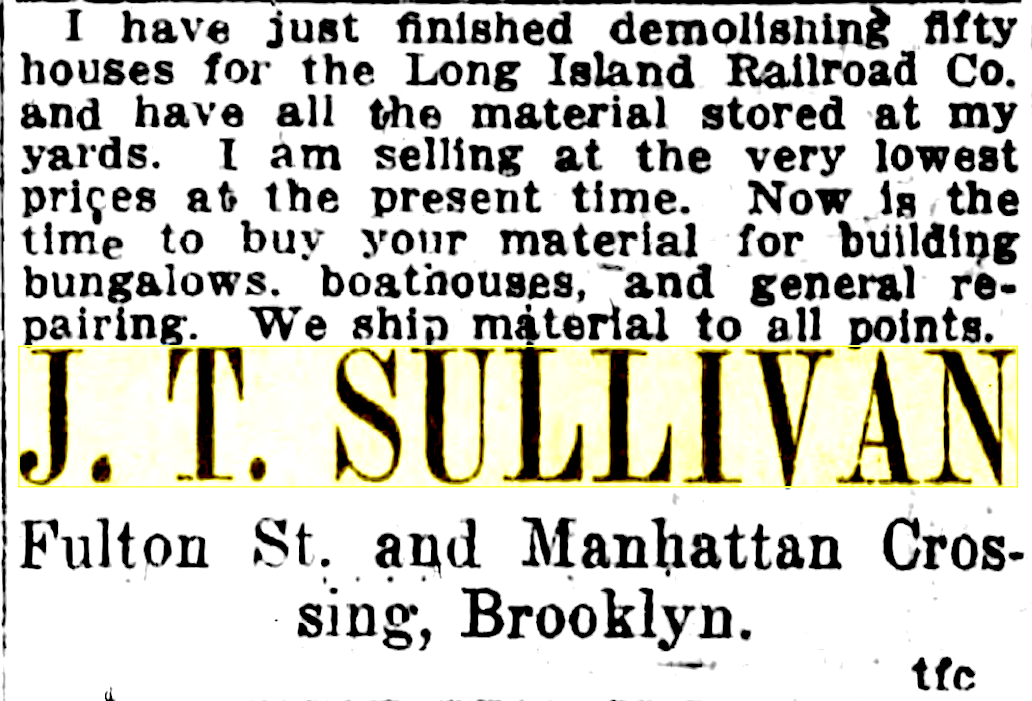
One of this firm's clients was the Long Island Rail Road.

Willie K. accepted a revised offer from Thomas Burton for $1,000.
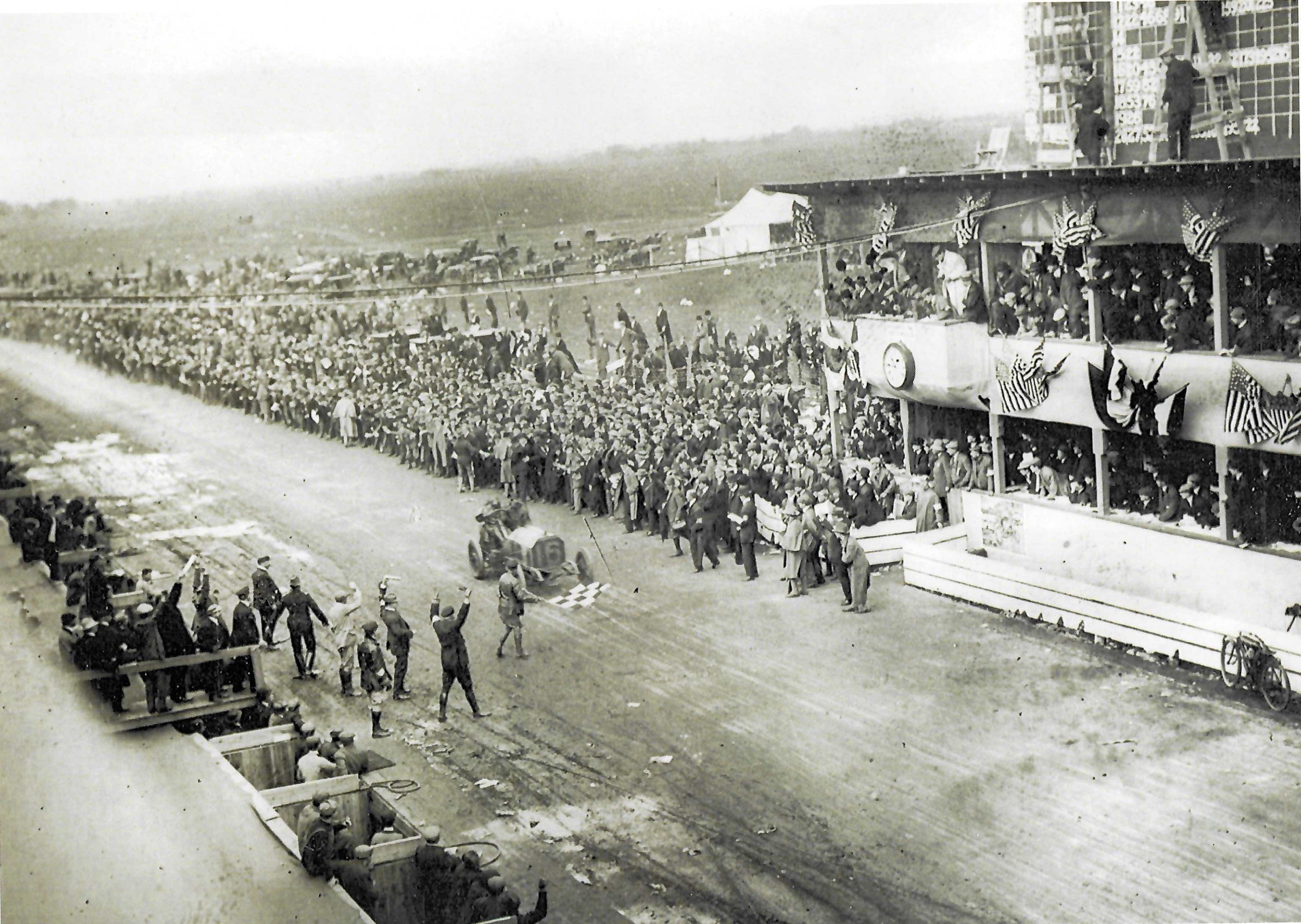

The contract was dated March 29, 1912 and anticipated all work to be completed with 6 weeks of the agreement being delivered.
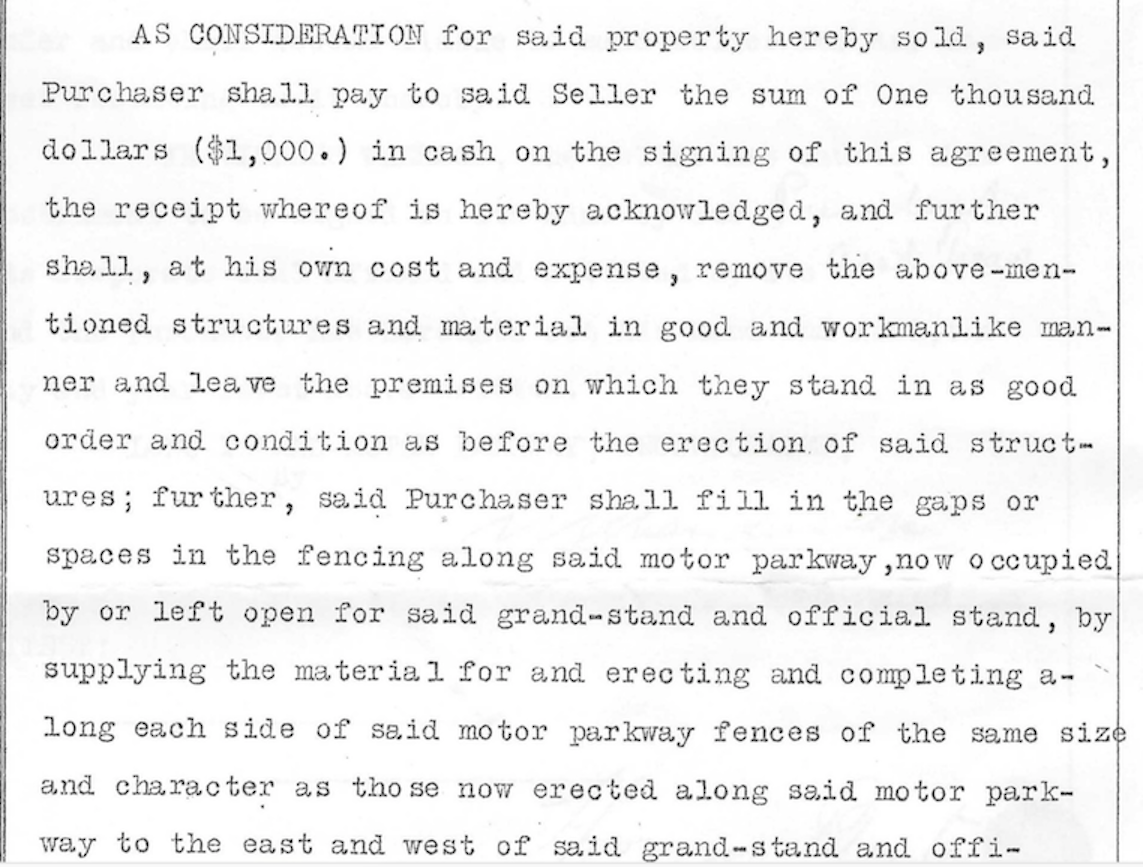
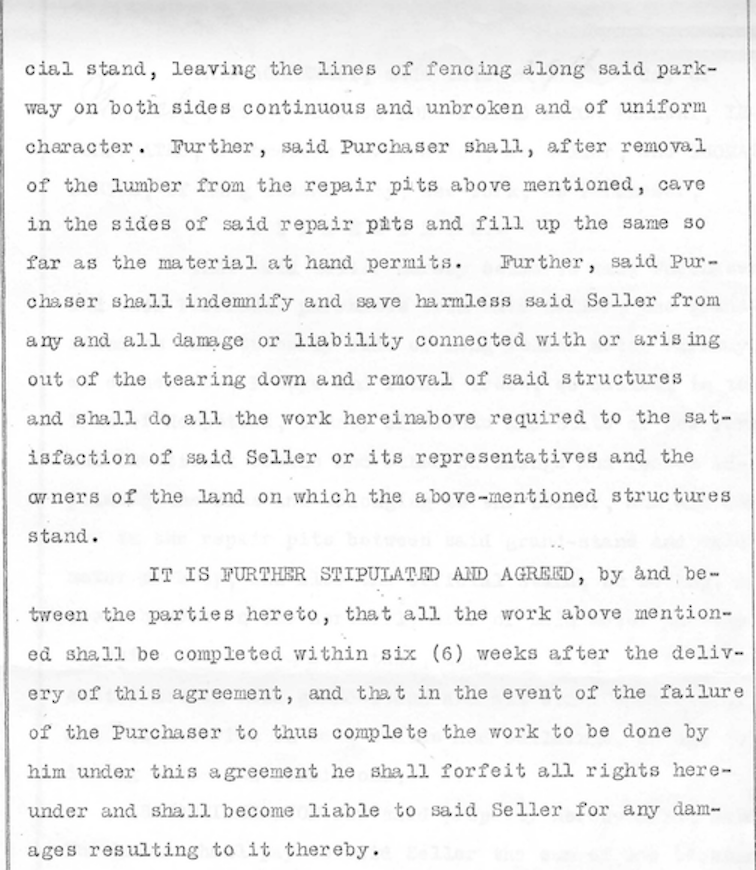
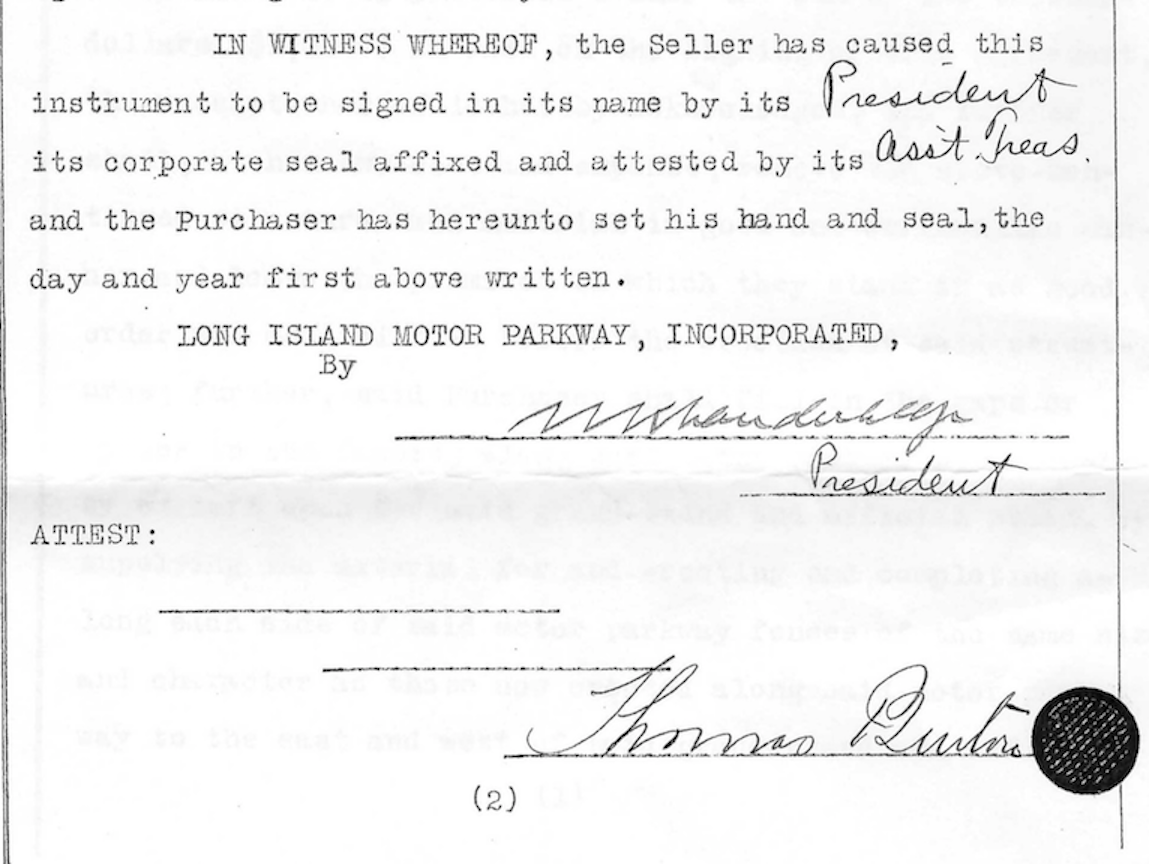
The agreement was signed by Willie K. and Thomas Burton.

Lumber from the pits were included.
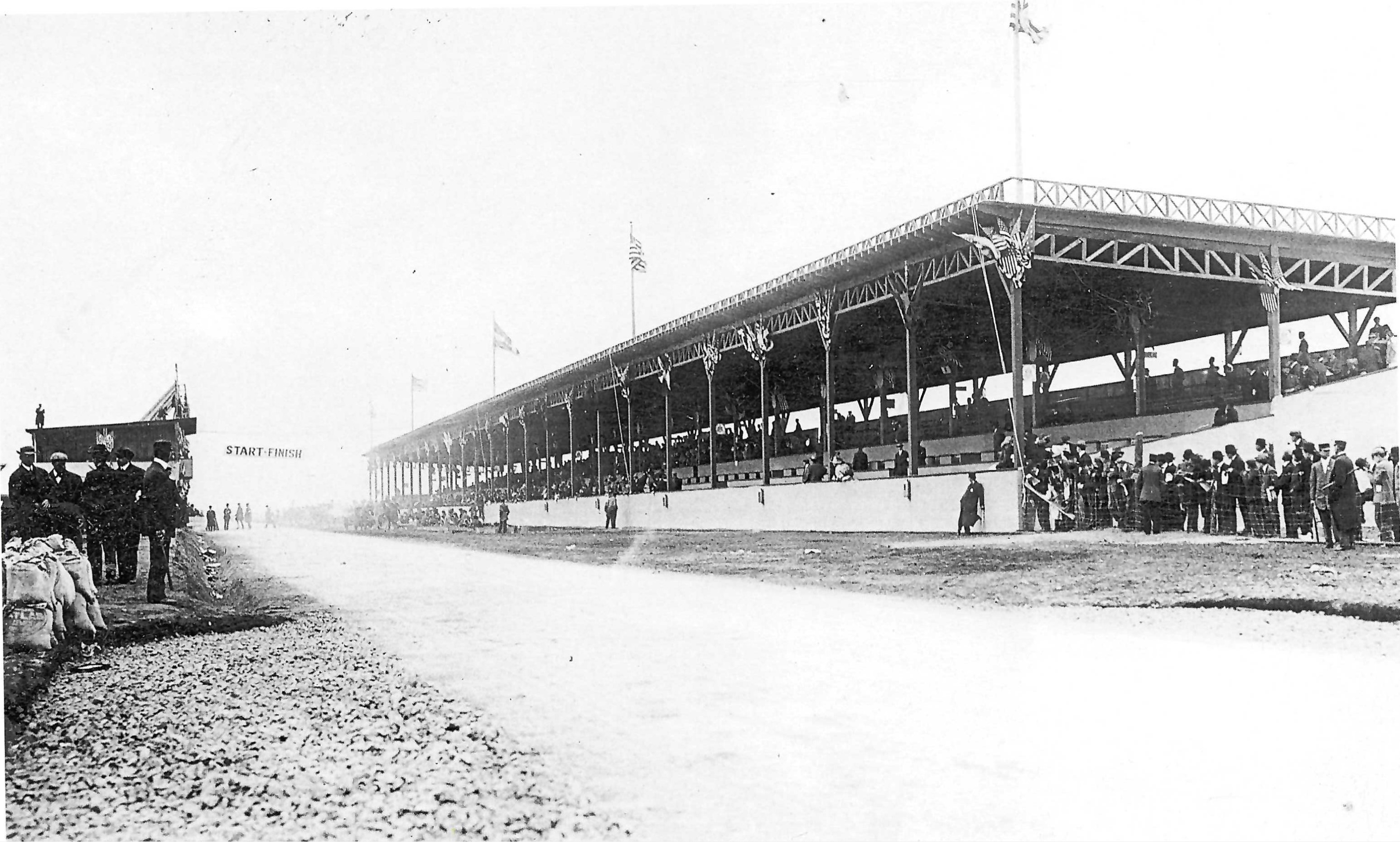
But where did the building material for the grandstand end up? I don't know the answer so anyone want to venture a guess?
2012

Location of the grandstand prior to the construction of 4 homes on the site.
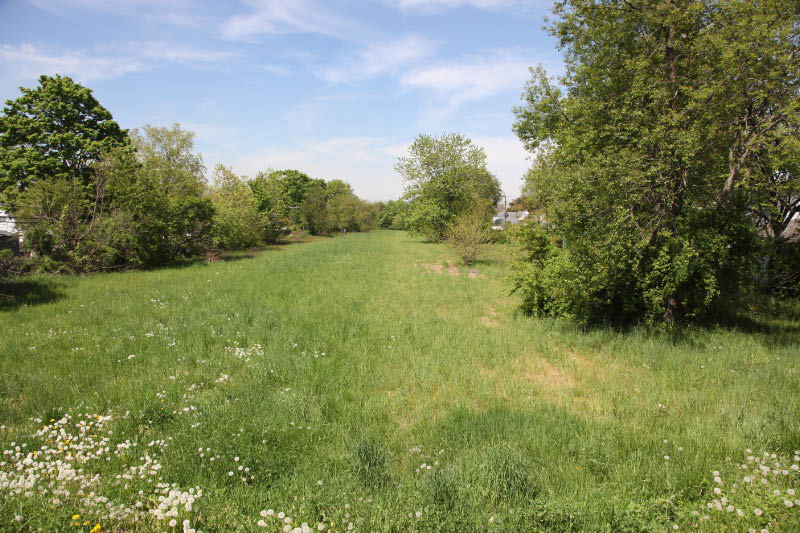
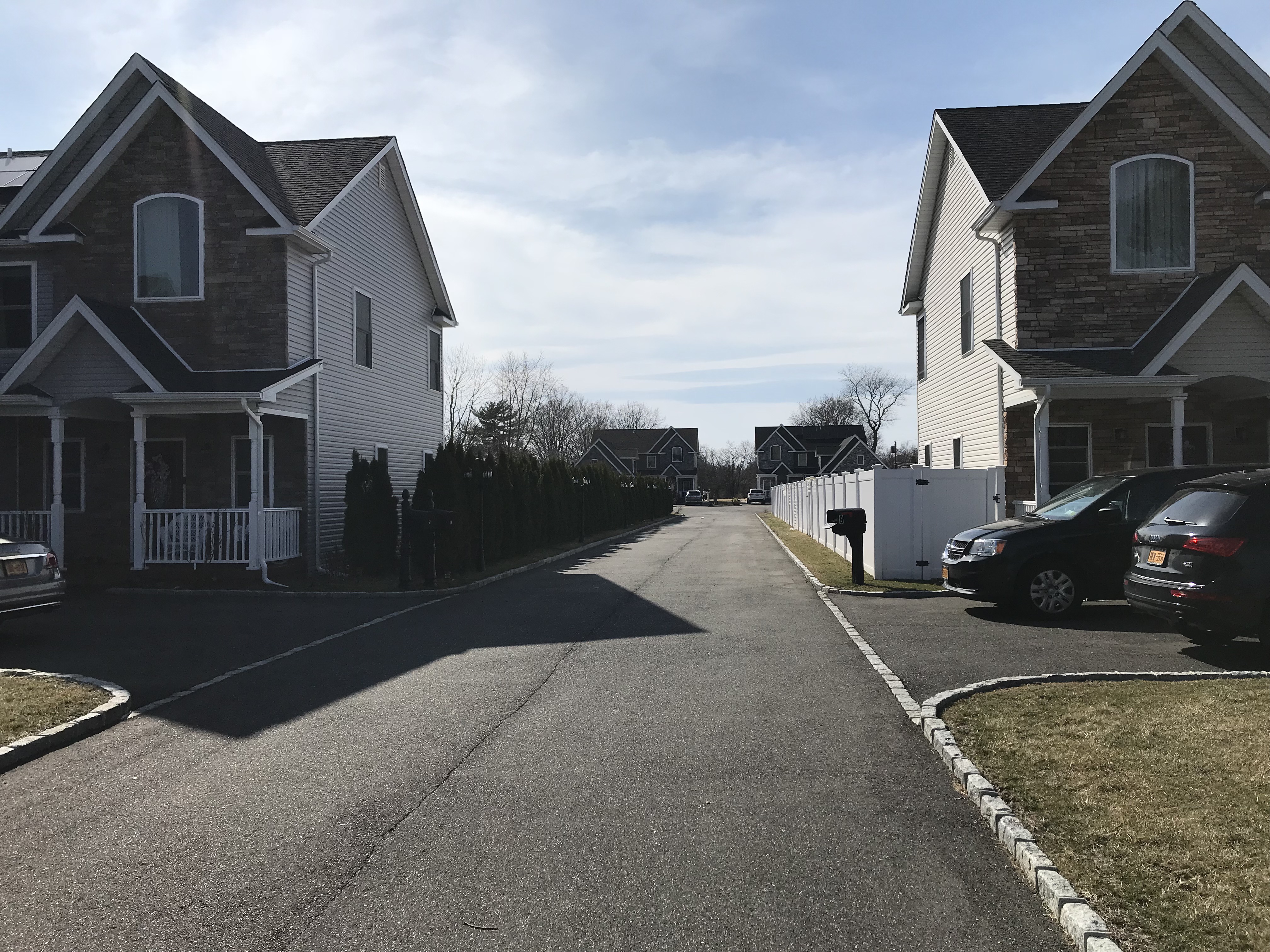
The same location in 2019. (Courtesy Sam and Dave)

Comments
Recall the plans for the grandstand being dismantled and relocated to Ronkonkoma. But the Speedway never came to be. All that building material was fairly new, so it must of been put to good use. Bet they utilized the Central RR to transport the materials to storage yards.
Well Art we know where the material didn’t end up. In those four houses that now occupy the site! Those residents probably don’t know the history of their property.
I grew up around the corner from the grandstand site, in fact moved back there too. Used to play on and about the roadway as a kid circa 1967+, it made a great stingray bike area.
The roadway itself was strange in that it was about a foot lower than the surrounding ground.
I never noticed any paving to indicate the grandstands, just the concrete roadway scattered with broken glass.
Interesting good photos of the grandstand and pit stops It was a very large setup.
Ernie, great vivid and detailed descriptions of the Motor parkway ca. ‘67. Thank you for sharing your experience. It’s likely the grandstand’s removal 60 years prior was overtaken by mother nature’s growth, leaving no sign of existence. P.S. - I’m guessing your Schwinn Stingray was a single-speed; those bikes are in high demand today along with the 3 and 5-speeds!
Top: An approximate location of the grandstand and environs vs today’s developments.
Bottom: A Sept 2011 view before the new houses were built.
Great post Art. You’re doing an amazing job in LIMP research in your retirement! You missed your calling. You could have been a private investigator.
I guess in 1912 nobody questioned the historical aspect of things - it was just as simple as hey rip this down and give me some money. This could have been such an amazing historical location. Remaining bridges are now preserved as landmarks and that is fantastic, but imagine if the GRANSTAND remnants were still there?
Not sure if this video from 2016 will load, but this is the exact location of the grandstand and as you can see, nothing remains.
The video did not load - too big, but it was posted on our 2016 Vanderbilt Day story if anyone wants to go back and see that. I replaced the video with Pic #1 which is the construction of the houses in 2015 at the grandstand site
Pic #2 is one of the posts that remained - in 2016 - not sure if it’s still there.
Pic #3 is a sign, Nassau Cty is very good at this - they tear everything down and remove history, but stick a sign there telling everyone that something historical WAS here, but not here anymore. This sign had weeds all over it a few years ago, Sam and I cleaned it all off - a neighbor there asked us what we were doing, we told him the history that he didn’t know even though he lived right on top of it.
It’s funny how for over 100 years they didn’t build houses at this location. Does anyone know WHY that would be? Levittown is a build to the brim, but for some reason this spot didn’t get houses built on it until 2015 or so? Were they ever considering preserving / doing anything here?
Dave - I’m not from Levittown but likely a provision was in place for many years to prevent future building on the LIMP RoW (LILCO did not obtain this particular stretch, nor Levitt could build on it during his massive project in the ‘40s). Jasco and others somehow managed to overcome the restriction and history was then lost forever, against local resident’s petitions.
Thanks for the comments regarding this post. The Levittown area holds special interest to me as I lived 38 years very close to where the Motor Parkway was. I’m even wearing my “Love It Long Island” t-shirt now, which a former employer used to promote Long Island. Regardless of where I am I’ll never lose the connection to where I’m from.
Dave - I have a whole file on the issues surrounding why the area was never developed until recently. But to make a long story short:
1. I’m not sure why Levitt did not purchase the land, but I’m sure someone out there knows.
2. There’s been reports of a sweet-heart deal made between Nassau County and a proposed developer in the 1970s that transferred ownership into private hands.
3. After the developer and others who eventually bought the property proposed development, they found out that zoning requirements prohibited them from moving ahead with their plans.
4. These zoning requirements were enacted at the time of Levittown’s formation and were in effect for 25 years. Following their expiration in 1975 Levittown residents proposed to the Town of Hempstead that they be incorporated into what is now called the “Levittown Planned Residential District”, zoning requirements specifically for Levittown aimed at keeping the local character of the area. Some of these requirements were stricter than those of the Town but are part of the Town Buillding Code and were very hard for developers to meet as numerous court challenges have shown.
5. As times changed,however and the need for further housing on Long Island increased (as well as more tax revenue needed) the Town has okayed the development of the Levittown Motor Parkway site.
Hope this helps.
Ernie - You recall the roadway being lower than the surrounding ground. A past mystery foto/blog of Levittown speaks of flooding from the LIMP ROW towards the newly built homes in the 1950’s ( so good drainage system road wise ). The ROW was eventually filled on both sides of the roadway to stop the flooding.
You forwarded that mystery foto Ernie, courtesy of Tim Lavey. The real remedy for the flooding problem was Basins. That photo clearly shows the LIMP ROW higher than the surrounding ground back then. Know the ROW was filled in along this stretch, except where catch basins were dug out.